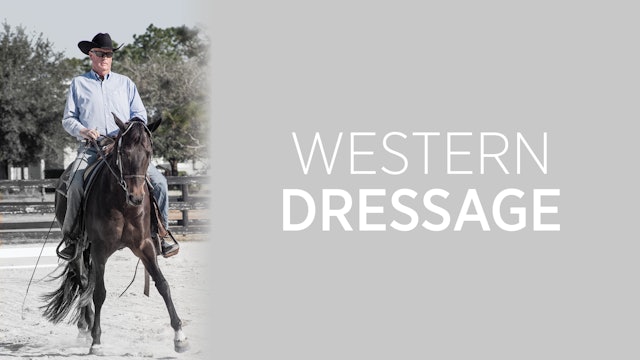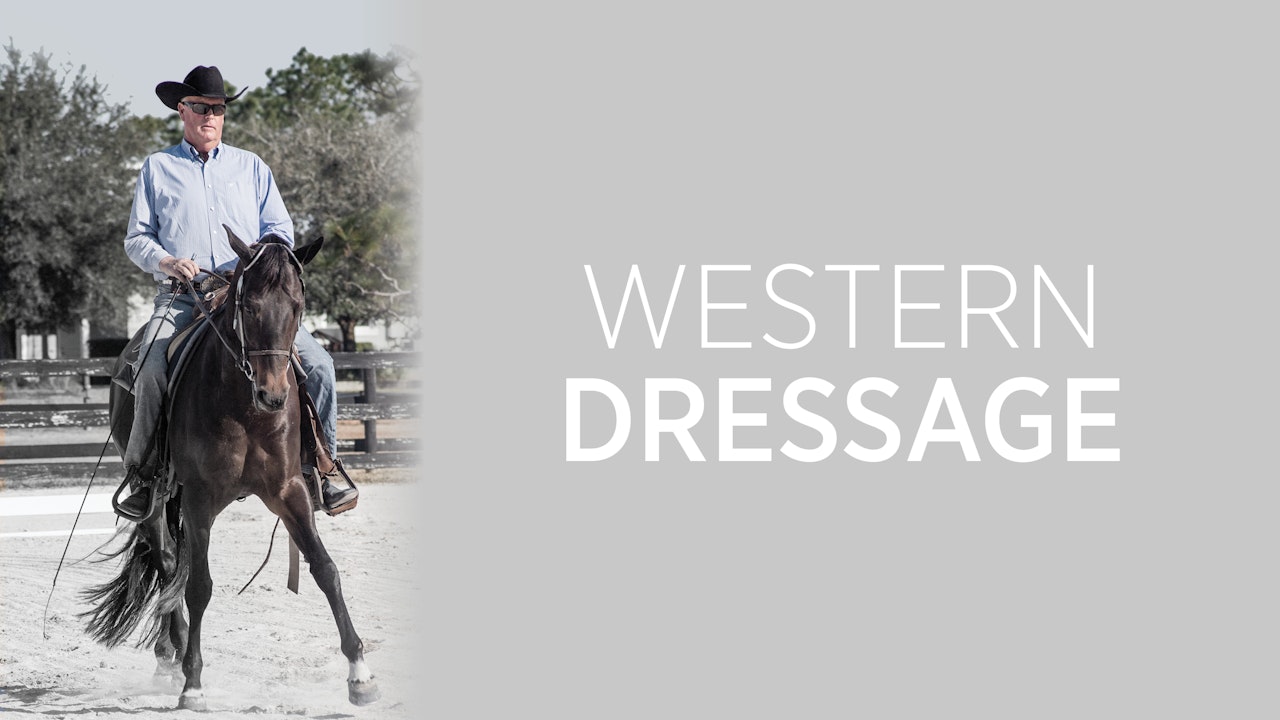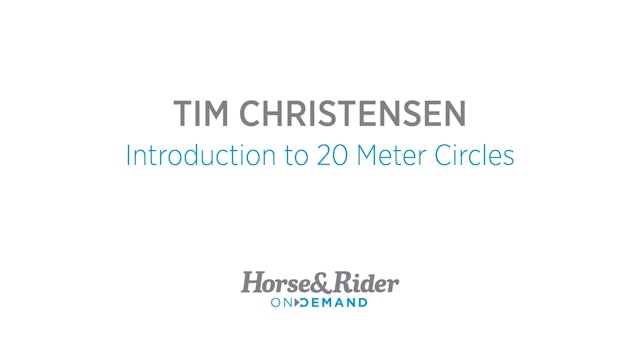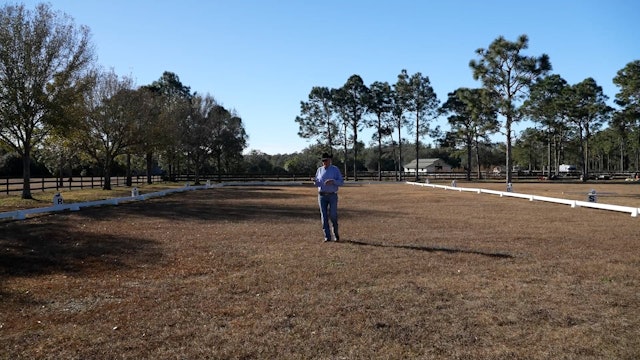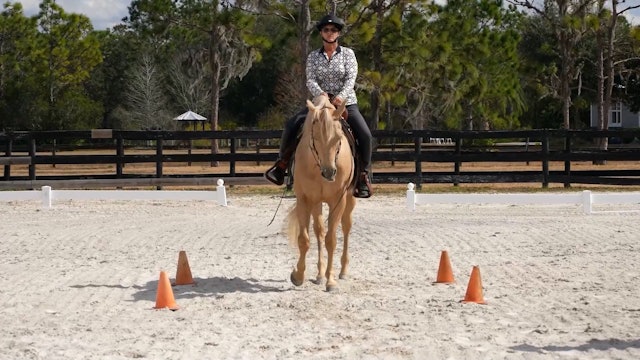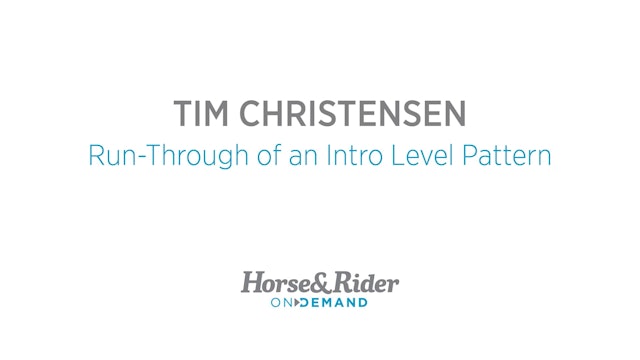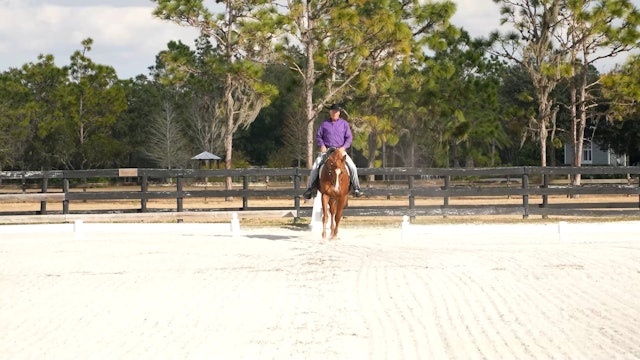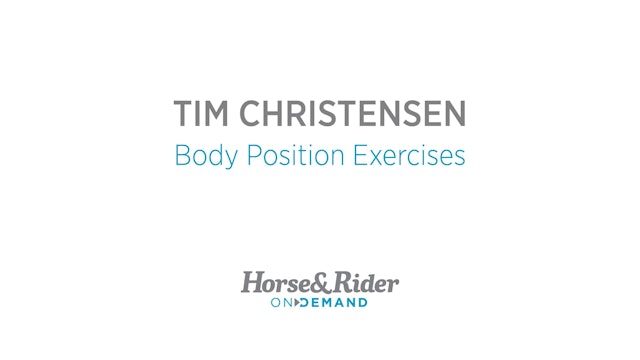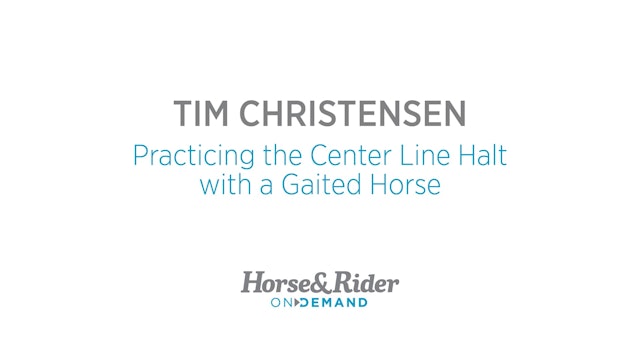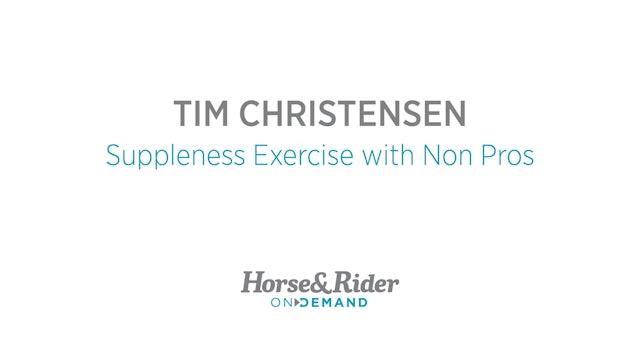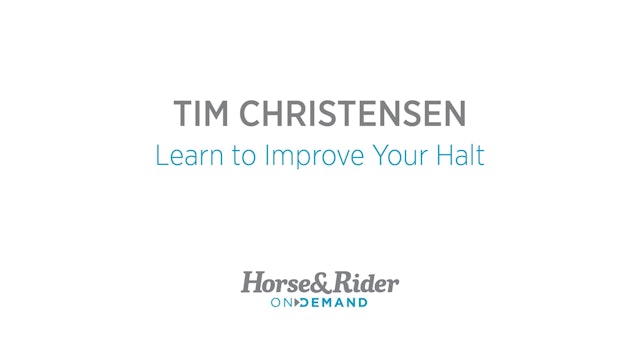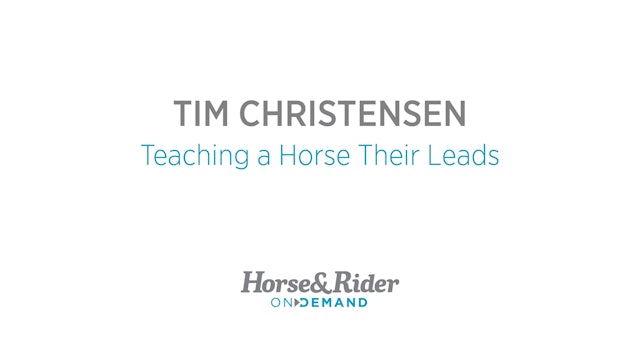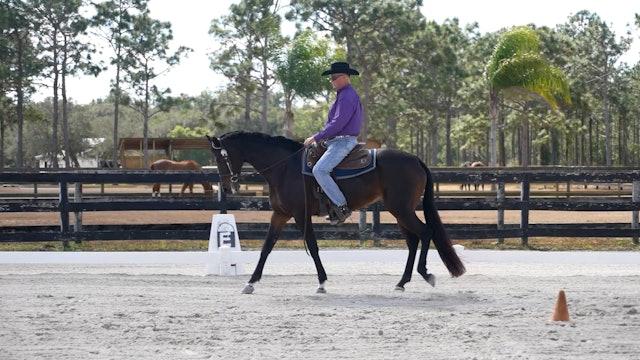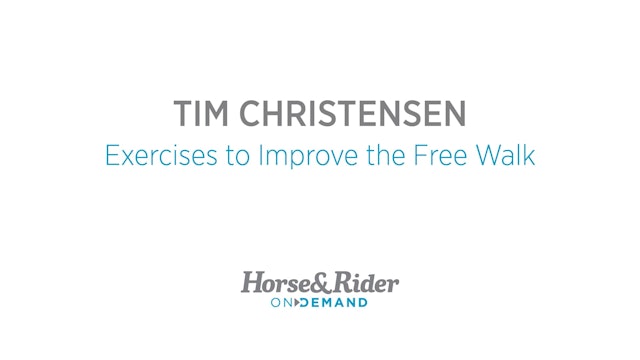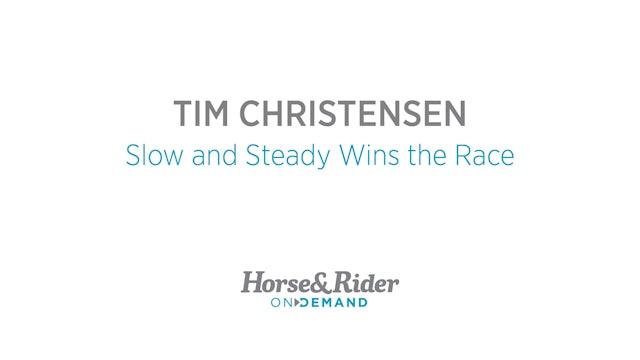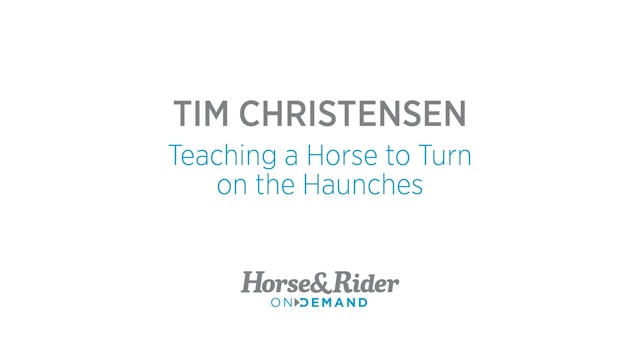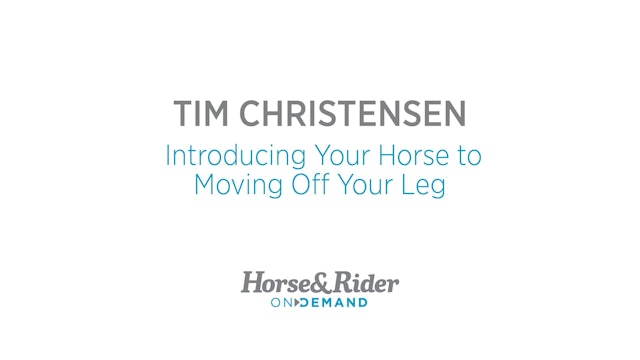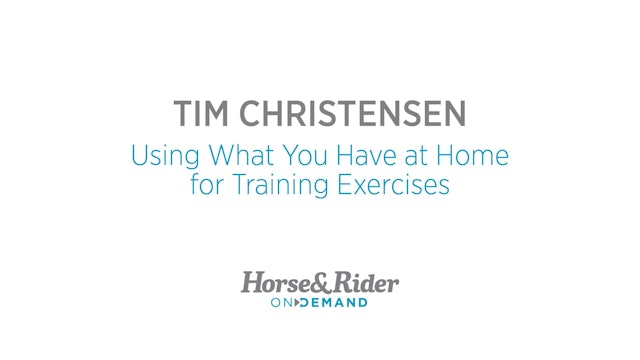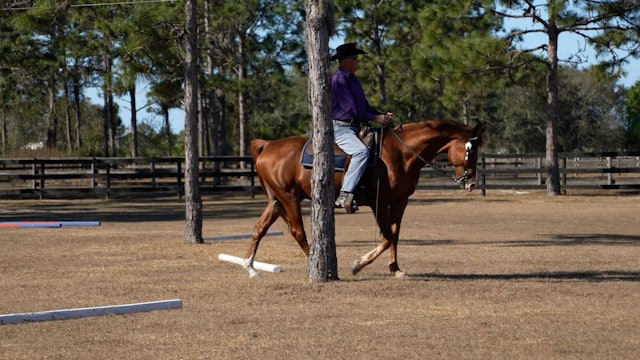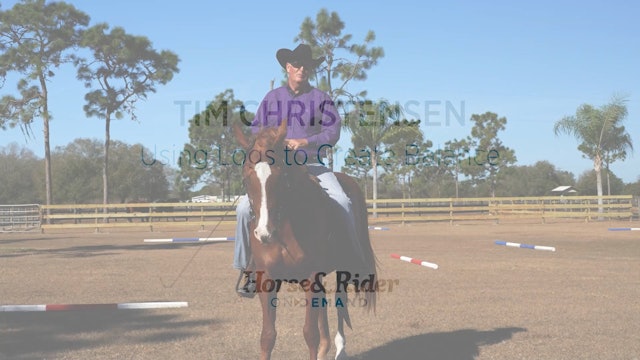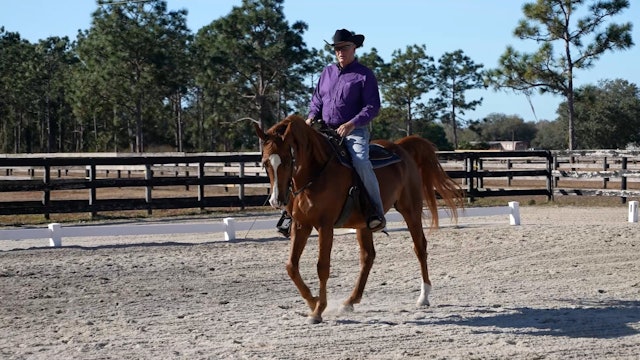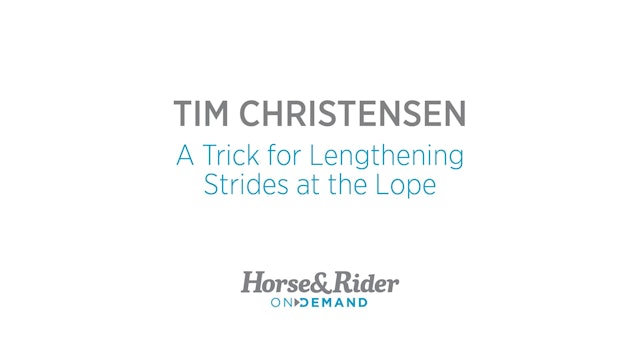Western Dressage
Western Dressage is your bridge to a new kind of precision riding—one that honors classical movements while keeping your Western roots front and center. In this playlist, you'll learn what it takes to succeed in Western dressage: from the maneuvers that matter to how each test is structured, judged, and leveled. Discover how horses of all breeds and backgrounds can thrive in this discipline with the right foundation and mindset.
Whether you're looking to fine-tune your transitions, explore a new show pen opportunity, or build better communication with your horse—Western Dressage on Ride TV shows you how to elevate your ride, one step at a time.
-
Learn to Improve Your Halt
In Western dressage, your halt is one of the most important maneuvers. Tim demonstrates what a proper halt should look like and what the judges want to see from your horse. Then, he gives you tips for improving your horse's halt.
-
Introduction to 20 Meter Circles
Tim Christensen explains where in a dressage arena you will use a 20 meter circle. He shows which letters you will use to measure your circle and explains some common mistakes made with a 20 meter circle.
-
Introduction to Quarter Lines
Learn where a quarter meter line is supposed to be ridden in a Western dressage pattern.
-
Working on Halts with Non Pros
Tim Christensen takes a non pro through a halt exercise to help score higher in western dressage.
-
Exercises to Loosen Your Horse Up
Tim Christensen demonstrates some exercises you can do to help loosen your horse's muscles up before a ride. These will help your horse warm up properly and keep him supple and limber.
-
Run-Through of an Intro Level
In this video, Tim does a complete run-through of a basic level Western dressage test. He talks us through the entire test so you know what he's thinking the entire time.
-
Run-Through of a Basic Level Test
Tim explains the importance of body position while riding. Then, he demonstrates a few exercises that you can practice at home.
-
Body Position Exercises
Tim demonstrates Western dressage with a gaited horse. He explains how gaited horses can compete in Western dressage and what the judges look for.
-
Riding a Gaited Horse in the Western Dressage
Tim Christensen practices going down the center line of a Western dressage arena with a gaited horse. He explains what the judges look for when you are going down the center line and goes over how gaited horses are judged.
-
Practicing the Center Line Halt with a Gaited Horse
Tim has two non pro riders work on their halts. Then, he has them practice an exercise to improve the precision of their halts.
-
Suppleness Exercise With Non Pros
In Western dressage, your halt is one of the most important maneuvers. Tim demonstrates what a proper halt should look like and what the judges want to see from your horse. Then, he gives you tips for improving your horse's halt.
-
Learn to Improve Their Halt
Tim talks about how he teaches a horse their leads and demonstrates what the process looks like.
-
Teaching a Horse Their Leads
Tim goes over what a smooth transition should look like in Western dressag. Then, he goes over some ways that you can improve your horse's transitions to help boost your score and have better control.
-
Improving Transitions
Tim shows us some exercises we can do to improve our free walk. This is one of the most important elements of a Wesern dressage test, and can be one of the most difficult for a horse to learn.
-
Exercises to Improve the Free Walk
In this video, Tim explains why it's important to not rush your horse when working on specific maneuvers. He says slow and steady will win the race in the end.
-
Slow and Steady Wins the Race
Tim walks us through teaching a horse to turn on the forehand. He shows us what it should look like and some struggles you might run into while teaching the maneuver.
-
Teaching a Horse to Turn on the Forehand
Tim walks us through teaching a horse to turn on the haunches. He shows us what it should look like and some struggles you might run into while teaching the maneuver.
-
Teaching a Horse to Turn on the Haunches
In this video, Tim explains what it means to have your horse move off your leg. He demonstrates this maneuver and tells you why it's an important tool to have.
-
Introducing Your Horse to Moving Off Your Leg
Tim demonstrates some exercises you can do to help loosen your horse's muscles up before a ride. These will help your horse warm up properly and keep him supple and limber.
-
Using What You Have at Home for Training Exercises
Similar to using logs for balance, Tim also shows us how to use them for improving your circles. He sets up poles in a 20 meter circle and explains how to use them to create a pretty and even circle.
-
Using Logs to Improve Circles
Although logs aren't used in Western dressage, Tim shows us how we can use them to help improve your horse's balance. He demonstrates a few different tricks you can do at home with poles or logs.
-
Using Logs to Create Balance
There are many different breeds of horses that compete in the Western dressage. Tim demonstrates the different gaits that you will see in a test on a Half Arabian half Trakehner horse.
-
A Demonstration of the Gaits with a Half Arabian/Half Trakehner
In this video, Tim shows us a trick for lengthening your horse's stride at the lope. This will help you improve your lengthened lope and the connection you have with your horse.
-
A Trick for Lengthening Strides at the Lope
Western dressage trainer Tim Christensen demonstrates how you can use half halts to get a better connection through your reins. He explains why this is beneficial for the Western dressage as well as many other disciplines.

